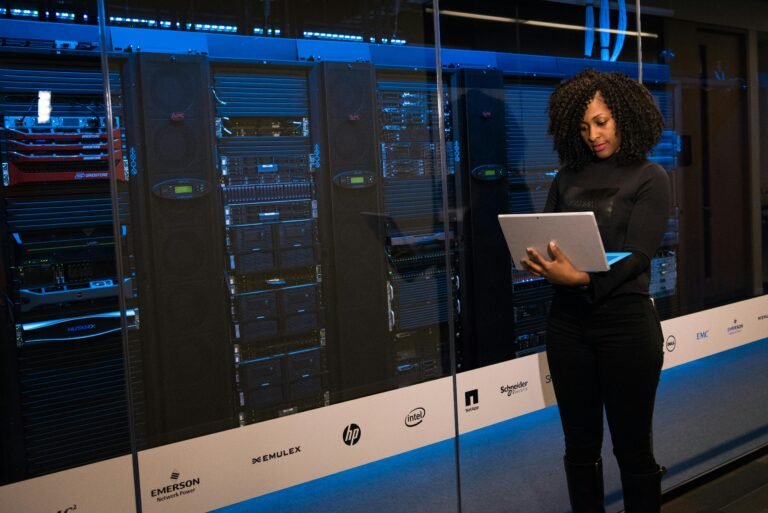Understanding China Cyber Threats: How Businesses Can Safeguard Themselves
- Introduction
- 1. Overview of the China Cyber Threat
- 2. Evolving Tactics of Chinese Threat Actors
- 3. Key Chinese Threat Groups
- 4. Industries at Risk
- 5. Recommendations for Businesses
- 6. Understanding Supply Chain Vulnerabilities
- 7. Cybersecurity Resources and Partnerships
- 8. FAQs on Tackling Chinese Cyber Threats
- Conclusion
- Discover more at InnoVirtuoso.com
Introduction
China-based cyber threat groups remain a major concern for global cybersecurity, targeting businesses with sophisticated espionage and data theft campaigns. As warnings from Western governments escalate, companies must take proactive measures to protect their data, systems, and intellectual property.
This article explores the evolving nature of Chinese cyber threats, identifies key threat actors, and offers actionable steps businesses can take to mitigate risks and bolster their cybersecurity defenses.
1. Overview of the China Cyber Threat
Recent Warnings
In December 2024, the US and UK issued stark warnings about Chinese cyber operations:
- US Homeland Security revealed that state-sponsored hackers breached telecom firms in multiple countries.
- UK’s National Cyber Security Centre (NCSC) highlighted inadequate awareness among businesses regarding the China threat.
China’s Motivations
The primary driver of Chinese cyber operations is economic advantage, according to Philip Ingram, MBE. These operations aim to:
- Steal intellectual property and trade secrets.
- Gather intelligence to strengthen Chinese industries and the Communist Party’s global influence.
2. Evolving Tactics of Chinese Threat Actors
Shift to Aggressive Methods
- Pre-2019: Covert, espionage-focused operations.
- Post-2019: Overt and aggressive campaigns targeting critical industries.
Advanced Techniques
- AI-Generated Content: Creating convincing phishing emails and deepfake videos.
- Living Off the Land (LOTL): Leveraging legitimate tools for malicious purposes, minimizing detection.
3. Key Chinese Threat Groups
1. Flax Typhoon
- Targets: Internet of Things (IoT) devices.
- Notable Activity: Linked to botnets operated by the Integrity Technology Group.
2. Salt Typhoon
- Targets: Telecoms, recording phone conversations.
- Key Concern: Threatens Internet Service Providers (ISPs) and adjacent businesses.
3. Volt Typhoon
- Targets: Critical infrastructure and defense sectors.
- Tactics: Employs stealth techniques like LOTL to avoid detection.
Other groups, such as APT31 and APT41, are known for targeting a range of industries with surveillance and financially motivated attacks.
4. Industries at Risk
Telecoms and Critical Infrastructure
- China’s focus on telecom firms stems from their role in data transmission and storage.
- Critical infrastructure, including energy and defense, is a prime target due to its strategic importance.
Data-Heavy Sectors
- Businesses storing or transmitting large amounts of sensitive data are at increased risk.
5. Recommendations for Businesses
1. Adopt Defense-in-Depth Strategies
- Access Controls: Implement multi-factor authentication (MFA) and role-based access.
- Vulnerability Management: Regularly patch software and update systems.
- Continuous Monitoring: Use advanced security tools to detect anomalies.
2. Strengthen Awareness and Training
- Conduct regular employee training on identifying phishing attempts.
- Include simulated attacks to assess preparedness.
3. Leverage Threat Intelligence
- Monitor feeds like CISA’s Known Exploited Vulnerabilities database.
- Stay updated on advisories from the NCSC and NSA.
6. Understanding Supply Chain Vulnerabilities
Risks from Chinese Technology
- Chinese hardware, such as CCTV systems and telecom equipment, poses significant risks.
- Western governments have banned certain technologies to mitigate threats.
Supply Chain Hygiene
- Vet suppliers for cybersecurity standards.
- Monitor third-party access to sensitive data.
7. Cybersecurity Resources and Partnerships
Government Guidance
- CISA and NSA: Provide detailed recommendations for securing communications infrastructure.
- NCSC: Offers sector-specific guidance for UK businesses.
Collaborative Efforts
- Partner with cybersecurity firms and join information-sharing initiatives.
- Leverage managed detection and response (MDR) services to augment internal capabilities.

8. FAQs on Tackling Chinese Cyber Threats
1. How can businesses identify if they are being targeted?
Monitor for unusual activity, unauthorized access attempts, and phishing emails mimicking trusted entities.
2. Which industries are most at risk?
Telecoms, critical infrastructure, and data-heavy sectors are frequent targets of Chinese cyber operations.
3. What role does supply chain security play?
A weak supply chain can provide attackers with indirect access to your systems. Prioritize rigorous vetting and continuous monitoring.
4. Are small businesses at risk?
Yes, especially those working with critical industries or storing sensitive data. Implement basic cybersecurity hygiene to mitigate risks.
Conclusion
China-based cyber threats represent a growing challenge for businesses worldwide. By understanding the tactics of key threat actors and adopting robust cybersecurity measures, companies can reduce their exposure to these sophisticated campaigns.
Proactive defense strategies, combined with insights from government advisories and partnerships, are essential for safeguarding critical assets and ensuring resilience against evolving threats.
Discover more at InnoVirtuoso.com
I would love some feedback on my writing so if you have any, please don’t hesitate to leave a comment around here or in any platforms that is convenient for you.
For more on tech and other topics, explore InnoVirtuoso.com anytime. Subscribe to my newsletter and join our growing community—we’ll create something magical together. I promise, it’ll never be boring! 🙂
Stay updated with the latest news—subscribe to our newsletter today!
Thank you all—wishing you an amazing day ahead!






